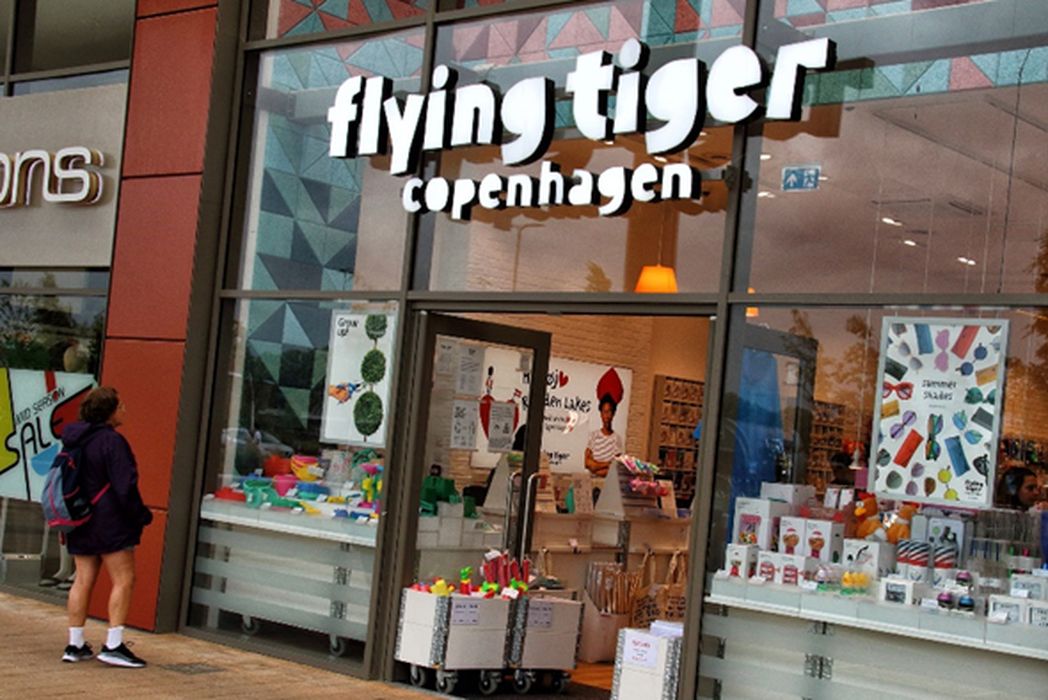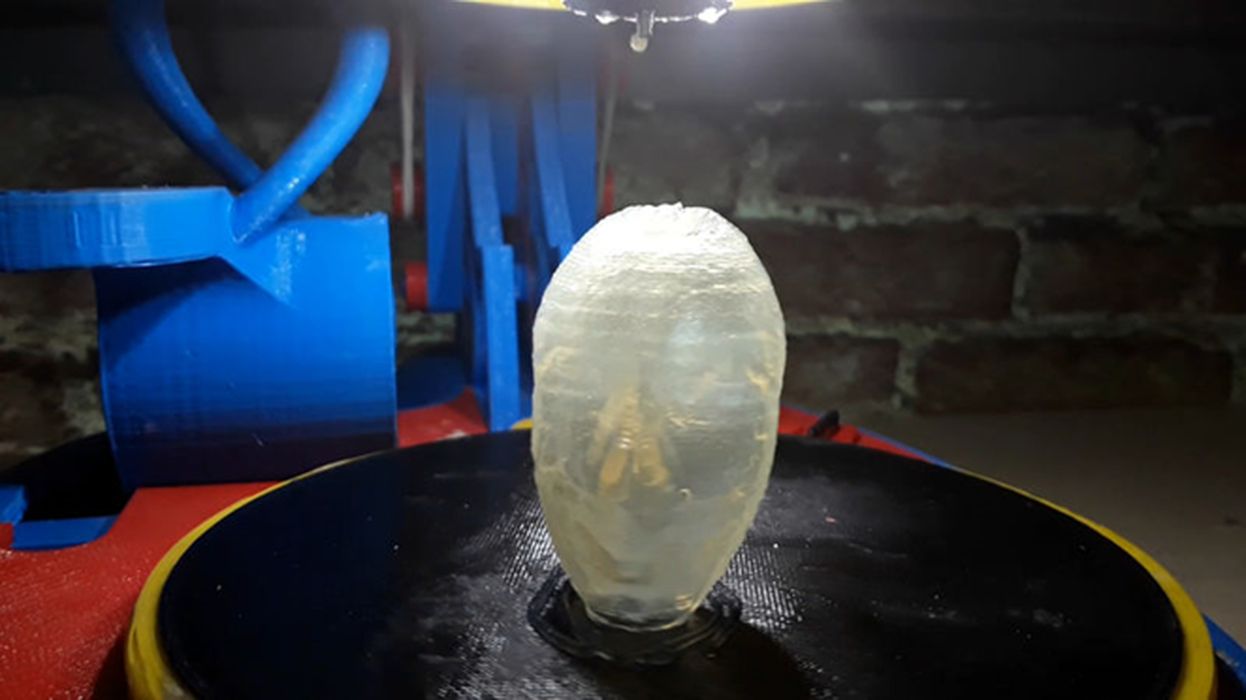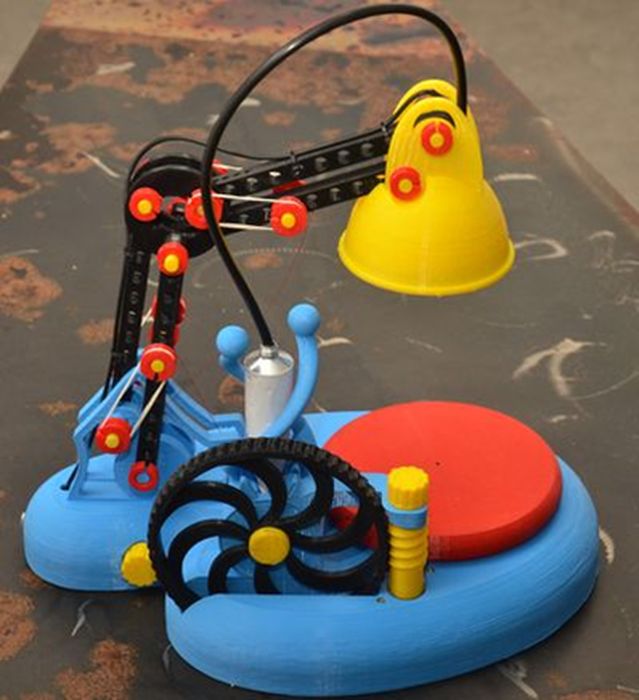
Charles R. Goulding and Preeti Sulibhavi look at a new toy 3D printer.
When the words Denmark and toys come up, the first company that normally comes to mind is LEGO. Flying Tiger Copenhagen (FTC) is a different 1,000-store, multinational store toy, gadget and household goods chain, that is committed to sustainability and reducing plastic usage. To achieve this goal the company is switching to alternative circular economy materials including metal, glass, ceramic, and recycled plastic.
Plastic toy design is one of the original major material design categories. FTC is endeavoring to maintain product design costs and 3D printing is a great way to control design costs as opposed to traditional modeling design processes.
Then there is q3d – the lamp that also functions as a 3D printer. This is a collaborative effort between FTC and Politronica (Politronica Inkjet Printing), to create a unique piece of work. Inspired by the iconic lamp LUXO L-1, created in 1937 by the Norwegian designer Jac Jacobsen, the “innovative” design reveals its double function, not only a printer but also a table lamp. The q3d has carefully optimized firmware based on an open source library system.
Furthermore, the true innovation of q3d is in the printing technique: just like any FDM 3D printer, it extrudes material, but in this case, it is not a molten plastic, but a polymer that, unlike the photo-hardening polymer so far used in 3D printing, it hardens with the white light emitted by a common LED light bulb. Unbelievable!

Its print area allows the creation of objects with dimensions of 80x80x120 mm, created exclusively with Flying Tiger Copenhagen (FTC) using virtual reality (VR) modeling techniques. For a hands-on learning experience, the q3d kit comes in a kit and it can be assembled with ease, making 3D printing accessible to all end-users.

FTC has its own design centers and creates new seasonal products for Valentine’s Day, Back to School, Halloween and Year-End holidays. In the recent year, FTC provided 350 million toys to its distribution network.
Many of FTC’s toy product lines could be made using 3D printers as well. This includes a toy such as the ceramic piggy bank that is displayed below.

The Research & Development Tax Credit
The now permanent Research and Development (R&D) Tax Credit is available for companies developing new or improved products, processes and/or software.
3D printing can help boost a company’s R&D Tax Credits. Wages for technical employees creating, testing and revising 3D printed prototypes can be included as a percentage of eligible time spent for the R&D Tax Credit. Similarly, when used as a method of improving a process, time spent integrating 3D printing hardware and software counts as an eligible activity. Lastly, when used for modeling and preproduction, the costs of filaments consumed during the development process may also be recovered.
Whether it is used for creating and testing prototypes or for final production, 3D printing is a great indicator that R&D Credit eligible activities are taking place. Companies implementing this technology at any point should consider taking advantage of R&D Tax Credits.
Not all fun and games…
While mentioning Flying Tiger Copenhagen (FTC) can bring smiles to the faces of many children, it is not all fun and games for FTC. The company is using advanced technology to create unique toys for children to play with and share.
